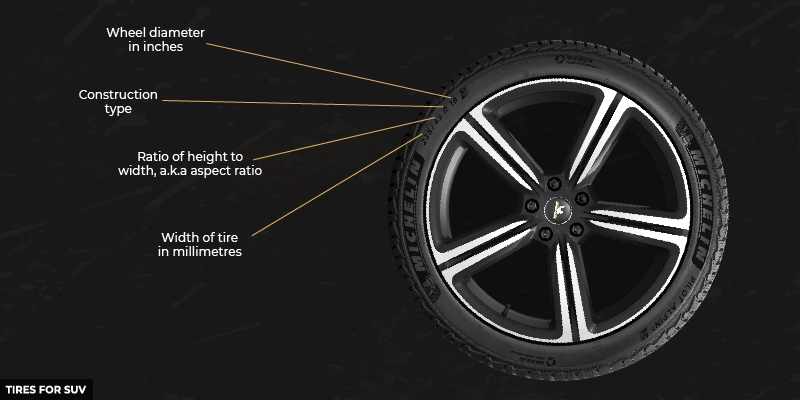Determining the right size of your tire can be challenging. When you go to a tire shop to check on the tires on display, the numbers you see on the tire’s sidewall will get you more confused. Then you ask yourself, what do all these letters and numbers mean? It’s now time to understand this thoroughly.
Car tire size usually ranges from 13 to 22 inches. Knowing your car’s tire size requirement is easy as you will see it in your car’s manual or on your car’s door. Understanding all the other information that comes with the tire size is the most critical because it directly impacts your vehicle’s performance.
For you not to make another mistake of installing the wrong tire on your car, stick around because I will discuss it in detail.
Sidewall Information
The sidewall information where it shows the size of the tire tells you more than what you expected to know. We usually want to see the size, and that’s it.

Now let me tell you this, the letters that come with the numbers you see on the tire’s sidewall are important. They inform you of the type of tire, the tire’s construction, the load index, and the tire’s speed rating.
Please take a look at the labeled image of a tire’s sidewall below and the definitions provided under it.
Tire Type
There are generally three types of tires, including passenger, SUV, and specialty tires. The kind of tire your car requires depends on how you are using it. You can usually choose between a passenger tire or an SUV tire, but you need to understand your vehicle’s needs – if you typically carry heavy loads, the SUV tire fits best.
In the image above, the ‘P‘ means it is a passenger tire. Some SUV tires may be labeled ‘LT,’ which stands for a light truck.
Tire Width
Tire width refers to the measurement from one sidewall to another measured in millimeters. In the image above, ‘185‘ signifies that the tire’s width is 185 millimeters.
Wider tires usually increase rolling resistance, so it might not be the best option if you want to maximize your car’s fuel efficiency.
Aspect Ratio
Aspect ratio is the percentage of the section height divided by the section width. The higher the aspect ratio, the taller the tire becomes. Aspect ratio is also sometimes called ‘profile’. I am pretty sure you’ve heard about low-profile tires.
Generally, tires with a lower aspect ratio are high-performance tires with better stability.
Construction Type
A tire can either be radial or cross-ply. Radial constructed tires generally have flexible sidewalls that improve maximum road traction and enhance vehicle stability. On the other hand, cross-ply tires feature multiple rubber plies that make the tire more sensitive to overheating – this is why high-speed tires are usually radial. The ‘R‘ that you see in the image above means that this particular tire is radial.
Wheel Diameter
Wheel diameter is simply the diameter of the rim in inches, not including the tire. Wheel diameter influences the stability and speed of your vehicle.
The image above shows that the tire has a wheel diameter of 14 inches.
Load Index
Well, this simply tells you how much weight your vehicle can carry. If you typically take heavy loads, go with a tire with a higher load index. There is a standard load index chart that shows the equivalent load capacity of the tire in pounds. The tire in the image above indicates a load index of 82, which means the tire can carry a maximum load of 1047 lbs.
Speed Rating
The speed rating of a tire indicates the maximum speed that it can safely maintain. The image above shows an ‘S‘ speed rating, which means that the tire can handle up to 112 mph based on the speed rating chart.
Conclusion
Knowing how to read your tire information is important when you are deciding which tire to get next. It is now easy to optimize your vehicle’s performance because you now understand tire sizes and the other details you see on a tire.

